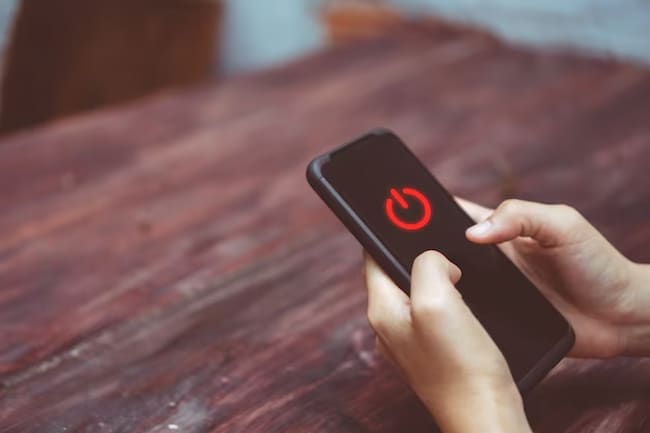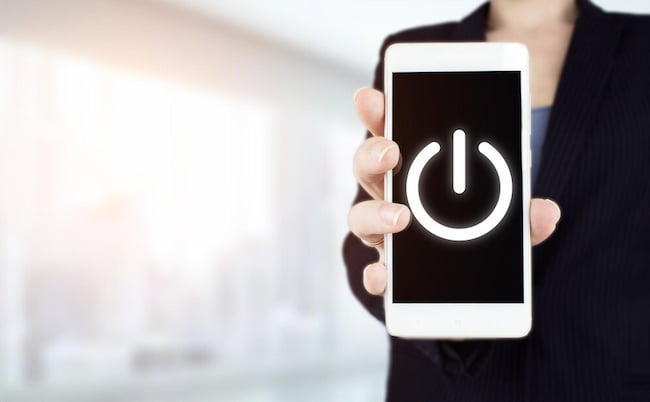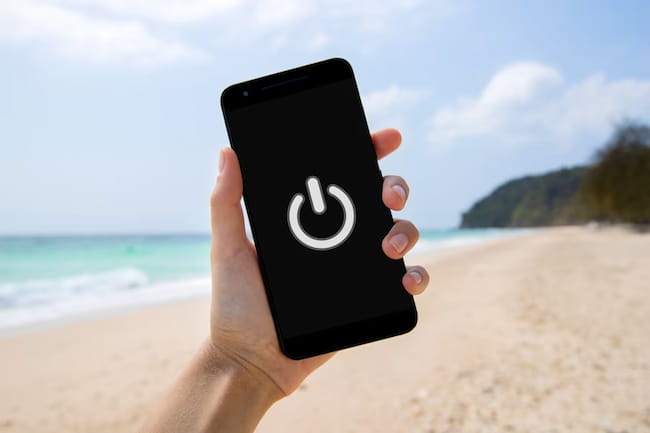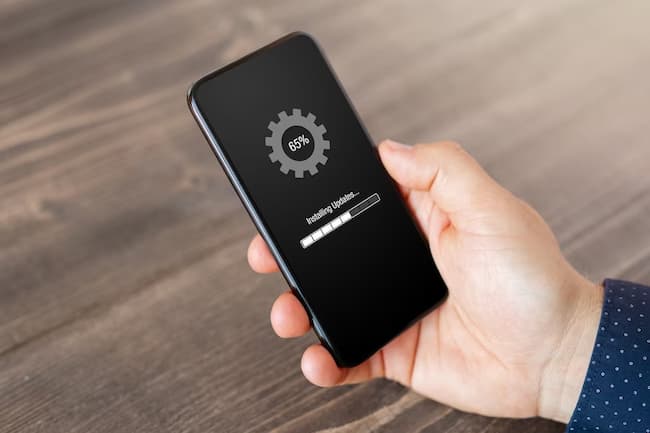Restarting an Android phone is a simple yet effective way to resolve various issues and optimize its performance.
Discover the importance of restarting your Android phone and how it can address common problems.
Uncover the benefits of this straightforward troubleshooting technique and learn how it can help you reclaim a smoother, more efficient mobile experience.
So, let’s dive into the world of restarting your Android phone and unlock its true potential.
Key takeaway:
- Restarting your Android phone can help resolve various issues and improve its performance. It is an important troubleshooting step for any Android user.
- There are different methods to restart an Android phone, such as using the power button, performing a hard reboot, removing and reinserting the battery (if removable), using ADB to reboot from your PC, and factory resetting as a last resort.
- If your Android phone’s power button is not working, you can restart it by connecting it to a power source, connecting it to a computer, using the volume button and home button combination, or removing and reinserting the battery (if removable).
- If your Android phone is frozen and unresponsive, you can force restart it by holding the power button or holding the power button and volume up button simultaneously.
- In case your Android phone is having persistent issues, restarting it in safe mode can help troubleshoot by temporarily disabling third-party apps. You can enter safe mode by following specific instructions for your device and exit safe mode to restart in normal mode.
- If your Android phone becomes unrecoverable and you need to recover important data, using a tool like Dr.Fone – Data Recovery can help retrieve lost files. It is essential to follow the step-by-step guide provided by the software for successful data recovery.
- In conclusion, it is important to follow the appropriate steps and exercise due diligence when restarting an Android phone. Restarting can resolve various issues, improve performance, and help in data recovery if needed.
Importance of Restarting an Android Phone
Restarting an Android phone is important. It can fix various issues and improve the device’s performance.
It also helps free up memory and resources. So, understanding the significance of restarting an Android phone and how to do it is essential.
For a successful restart:
- Press and hold the power button until the Power off option appears.
- Tap on the Power off option to shut down the device.
- Wait a few seconds then press and hold the power button until you see the device logo or vibration.
- Release the power button once the logo or vibration appears.
- The device will start up again and check if any issues have been resolved.
Other methods to consider:
- Hard reboot.
- Removing and reinserting the battery (for phones with removable batteries).
- Using ADB to reboot from your PC.
- Factory resetting is a last resort.
Restarting an Android phone can range from simple to complex. Find the right method for your tech troubles!
Different Methods to Restart an Android Phone
When it comes to restarting your Android phone, there are various methods you can try.
From the traditional power button option to performing a hard reboot, removing and reinserting the battery, using ADB to reboot from your PC, and even resorting to a factory reset as a last-ditch effort.
Each sub-section of this guide will walk you through these different methods, providing you with the necessary steps to effectively restart your Android phone.
Using the Power Button
The power button on an Android phone is essential. It lets users restart their devices. This is often necessary to fix issues or refresh the system.
Restarting can help with software glitches, improve performance, and clear temp files. It’s a simple yet effective way to troubleshoot problems.
To restart an Android phone with the power button:
- Locate the power button, typically on the side or top. Press and hold until a menu appears.
- Look for options like “Restart” or “Reboot”. Select one via touchscreen or navigation with volume and power buttons.
- A confirmation prompt may appear. Tap “OK” or confirm as specified.
- Wait for the phone to restart.
- Resume use as normal.
This is a quick and convenient way to address issues and improve performance. Other functions related to restarting are covered in the ‘Performing a Hard Reboot’ and ‘Removing and Reinserting the Battery’ sections.
Performing a Hard Reboot
To do a Hard Reboot on your Android, follow these steps:
- Hold the power button for 10-15 seconds. This will turn off the device, even if it’s not responding.
- Release the power button and wait briefly.
- Then, press and hold the power button until the phone restarts to initiate a fresh boot-up. This can fix software issues.
Performing a Hard Reboot should only be done if needed. It forces the device to shut down without going through the normal process. Try other methods first.
If a Hard Reboot doesn’t work, seek help or consider factory resetting or data recovery. The next section will discuss alternatives for restarting an Android phone.
Removing and Reinserting the Battery
- To restart an Android phone, remove the battery.
- Grab the back cover, take it off, and access the battery.
- Carefully remove the battery and wait a few seconds.
- Put the battery back into its slot.
- Securely insert it and align the metal contacts.
- Put the cover back on. Make sure it is properly aligned and press firmly.
This process may help resolve software glitches or unresponsive devices. Not all Android phones have removable batteries, so this method won’t work for everyone.
Using ADB to Reboot From Your PC
- Connect your Android to your PC via a USB cable.
- Open the command prompt on your PC.
- Navigate to the ADB location.
- Type in
"adb devices"to check if your device is recognized. - If it is, use the command
"adb reboot"to restart your phone.
This method requires some technical knowledge. If you are not familiar with these concepts, seek help first.
It offers more control and versatility than traditional methods, especially when hardware buttons don’t work.
When nothing else works, factory resetting is an option. Wipe away your problems and start anew.
Factory Resetting as a Last Resort
A factory reset is a last resort for Android phones that have issues not fixed by other methods.
All data and settings on the device will be erased, returning it to its factory state. Make sure to back up all important data before resetting.
To reset, go to the phone’s settings menu and find “Backup & Reset” or “Reset”. Select “Factory Data Reset” and review any warnings. Confirm to reset and the phone will start the process.
Remember, factory reset is only for extreme cases. Other less intrusive options should be explored first and professional help should be sought if available. Even without power, you can still revive your tech!
Restarting an Android Phone Without a Working Power Button
When your Android phone’s power button stops working, it can be quite frustrating.
But fear not, there are alternative ways to restart your device without relying on the power button.
In this section, we will explore different methods to restart an Android phone without a functioning power button.
From connecting the phone to a power source or computer to utilizing the volume and home button combination, or even removing and reinserting the battery, we’ll provide you with practical solutions to get your phone up and running again.
Connecting the Phone to a Power Source
When your Android phone is running low on battery, it’s time to recharge! There are multiple ways to get it powered up.
1. Connect the USB end of your charging cable to a wall adapter or computer. Then attach the other end to the charging port on your phone. Make sure the cable is firmly plugged in and there’s no weak connection.
2. Using a reliable cable and charger that are compatible with your specific phone model is essential. Avoid third-party cables or chargers, as they can damage your device or slow down charging. Also, make sure you’re using a power source that won’t overheat.
3. Carry a portable charger and keep spare chargers in convenient places, so you’ll always have access to a reliable power source.
Don’t miss out on important calls, messages, or opportunities due to a dead battery. Stay connected and keep your smartphone powered up at all times!
Connecting the Phone to a Computer
Want to link your Android phone to a computer? There are several ways! You can transfer files, update software, and do other stuff between the two. Here’s a step-by-step guide:
- Turn on your computer.
- Get your phone’s USB cable.
- Plug one end into your phone’s charger port.
- Plug the other end into your computer’s USB port.
- Your phone will give you a notification that it’s connected as a media device or for file transfer.
- You can now access your phone’s data on your computer via the file explorer or special software.
You may need to enable USB debugging in the developer options. Certain manufacturers may also have software and drivers that need to be installed on the computer. Check the instructions or contact their support if needed.
Follow these steps and connect your Android phone to a computer. Smoothly access its memory or do different tasks!
Using the Volume Button and Home Button Combination
To restart your Android device using the Volume Button and Home Button Combination, follow these steps:
- Press and hold the Volume Down and Home buttons together.
- Keep holding the buttons until the screen goes black or shows the Android logo.
- Let go of the buttons when you see the logo.
- Your device will reboot and turn back on.
This method is useful if the power button is not working or if your phone is frozen. Please note that not all phones have a Home button, so this method may not work for all devices.
Additionally, some newer models may require using the Volume Up button instead of Volume Down.
Use this combination when your Android device is frozen or experiencing other software issues.
It is a simpler alternative to performing a factory reset. Now you know the secret of restarting with the Volume Button and Home Button Combination!
Removing and Reinserting the Battery
Remove and reinsert the battery to restart an Android phone. Here’s how:
- Press and hold the power button until the power menu appears.
- Carefully remove the back cover. It may have a latch, slide, or lift.
- Find the battery.
- Gently lift it out using your fingers.
- Wait 10-15 seconds, then reinsert it. Securely close the back cover.
Other methods for restarting an Android phone include the power button, hard reboot, ADB, and factory reset. Pick which one fits your needs.
Pro Tip: Back up data before removing and reinserting the battery.
Force Restarting an Android Phone When Frozen
When your Android phone freezes, fear not! In this section, we’ll explore the effective methods to force restart it.
From holding the power button to combining it with the volume-up button, we’ll provide you with practical solutions to get your phone up and running smoothly again.
So, if you’ve ever encountered an unresponsive Android device, keep reading to find out how to tackle this common issue.
Holding the Power Button
- Locate the power button on your Android phone. This is usually located on the side or top.
- Press and hold for a few seconds. Options will appear on your screen. These could be Power Off, Restart, or Emergency Mode.
- Select the desired action.
- Release the power button and navigate through the options.
- Confirm your choice by tapping “OK” or “Yes”.
This is how you can restart or turn off your Android phone.
Note: Different Android devices may vary. Check the user manual or contact customer support if needed.
Holding the Power Button and Volume Up Button
- Hold the Power and Volume Up Buttons to restart your Android device.
- Press and hold both for 10 seconds.
- Continue holding until the screen goes blank and the phone vibrates.
- Release the buttons once you feel the vibration and wait for it to boot up.
- This is helpful when glitches or errors freeze or make the phone unresponsive.
- It allows the OS to restart and fix any lingering issues.
- The instructions may vary based on make and model, so refer to the manual or manufacturer’s website for tailored instructions.
- This method can help without needing advanced technical knowledge or professional assistance.
- Safe mode is like a phone’s panic room, where it hides from malfunctioning apps.
Restarting an Android Phone in Safe Mode
Restarting an Android phone in Safe Mode allows you to troubleshoot and fix issues. In this section, we’ll explore how to enter Safe Mode, exit it, and restart your phone in normal mode.
Stay tuned for step-by-step instructions and tips to ensure a smooth and hassle-free experience.
Entering Safe Mode
To enter Safe Mode on an Android phone, follow these steps:
- Switch off the device.
- Press and hold the power button until you see the device logo.
- Let go of the power button and quickly press and hold the volume down button until the device starts.
- You’ll know you’re in Safe Mode when you spot “Safe Mode” in the bottom left corner of the screen.
This is a great way to troubleshoot issues with apps or system settings.
It’s possible that the process to enter Safe Mode may differ depending on your phone’s make and model. If you’re unsure, check the user manual or the manufacturer’s website.
Make the most of this useful feature! Enter Safe Mode and you can detect and solve any issues affecting your Android phone’s performance without having to search through numerous apps or reset everything.
Take these steps now and get the best experience with your Android device.
Leaving Safe Mode and returning to Normal Mode is like removing the safety helmet and jumping back into the wild world of Android!
Exiting Safe Mode and Restarting in Normal Mode
- Power Off: Hold the power button until the power options appear.
- Tap Restart: Choose the “Restart” option from the menu.
- Wait for Reboot: Let your device finish rebooting. This may take a few moments.
- Check for “Safe Mode“: After restarting, check if it is still in safe mode. If not, you are back in normal mode.
- Repeat Steps if Necessary: If the phone is still in safe mode after restarting, you may need to repeat these steps.
Note: You can use all the phone’s features and access apps after exiting safe mode. It is usually entered when troubleshooting issues or system problems.
If the above method doesn’t work, try connecting the phone to a computer or using the volume button and home button combination.
These steps should help you exit safe mode and return your Android phone to normal functioning. It is best to do this after solving any problems that caused you to enter safe mode.
Unlock the hidden data mysteries with Dr.Fone – your phone’s Sherlock Holmes!
Data Recovery for Unrecoverable Phones
Introducing the Data Recovery for Unrecoverable Phones section, where we explore the powerful tool known as Dr.Fone – Data Recovery.
Discover how this innovative software can help you retrieve lost data from your Android phone.
We dive into an enlightening step-by-step guide on effectively using Dr.Fone – Data Recovery, ensuring you never have to worry about irretrievable data again.
Stay tuned to learn how to recover your valuable information effortlessly.
Introduction to Dr.Fone – Data Recovery
Dr.Fone – Data Recovery is the perfect solution for retrieving lost data from Android phones.
Its user-friendly interface combined with advanced scanning algorithms means it’s a reliable choice.
It supports all popular Android devices and can be used on Windows and Mac computers.
To use Dr.Fone – Data Recovery, simply connect your Android phone to your computer via a USB cable and follow the easy instructions.
Within minutes, the program will scan your device and retrieve the files. You can preview them before restoring them to the device or saving them to your computer.
Other features include backup and restore. Create a backup of your device’s data and restore it whenever needed. That way, if something goes wrong, you can easily recover your important files and settings.
Dr.Fone – Data Recovery is an invaluable tool for recovering lost or deleted files.
Its user-friendly interface and powerful recovery capabilities make it an ideal choice for any user who needs to retrieve important data.
Whether you have accidentally deleted a file or experienced a system crash, Dr.Fone – Data Recovery has got you covered.
Step-by-step Guide on Using Dr.Fone – Data Recovery
Dr.Fone – Data Recovery is an incredible software for recovering data from unrecoverable Android phones. Here is a guide to using it:
- Connect your phone to your computer with a USB cable. Ensure the phone is on and in USB debugging mode.
- Launch Dr.Fone – Data Recovery.
- Choose the recovery mode based on the type of data you want back (contacts, messages, photos).
- Click ‘Start’ – the software will scan the internal storage of your device for deleted or lost files.
- Preview all the recoverable files and select the ones you want to save. Then press ‘Recover’ to do so.
If you follow these five steps, you should be able to retrieve important files and documents from your unrecoverable Android phone.
Remember, each step should be followed carefully to maximize the chances of successful data recovery.
Conclusion: Importance of Following Steps and Due Diligence
- Restarting your Android phone correctly is crucial. Follow the steps and be careful. Refer to the reference data to be sure you are taking the right actions.
- To restart, there are specific steps to take. Adhere to these procedures to avoid any issues. Know the reference data and the right sequence of actions.
- Pay attention to the details not covered yet. They are essential for a successful restart. Be thorough and mindful of the nuances. Take all the necessary precautions.
Some Facts About How to Restart Your Android Phone:
- ✅ A hard restart, also known as a “force restart” or “hard reset,” is a process of manually shutting off and turning back on a device, such as a smartphone, tablet, or computer. (Source: Team Research)
- ✅ A hard restart is typically performed when the device is unresponsive or frozen and can help resolve software issues. (Source: Team Research)
- ✅ Performing a hard restart on an Android device can be done by holding down the power button for 15 to 30 seconds until the phone restarts. (Source: Team Research)
- ✅ Restarting your Android device can help clear its memory and fix minor issues, such as freezing/crashing apps and slow performance. (Source: livewire)
- ✅ Closing apps and swiping up to show recently used apps can also improve device performance without the need for a reboot. (Source: lifewire)
FAQs about How To Restart Your Android Phone
How do I restart my Android phone step by step?
Answer: To restart your Android phone, follow these steps: 1. Press and hold the power button for 5-10 seconds. 2. Select “Restart” from the power menu that appears. 3. Wait for your phone to shut down and power back on.
What happens if I restart my Android phone?
Answer: Restarting your Android phone refreshes the operating system and helps resolve minor issues. It can improve performance, clear memory, and fix problems like freezing apps or slow performance.
Will restarting my Android phone delete unsaved data?
Answer: Yes, restarting your Android phone may result in the loss of unsaved data or settings. It is recommended to save your work or backup important data before performing a restart.
Can I restart my Android phone with a frozen screen?
Answer: Yes, if your Android phone has a frozen screen, you can still restart it. Press and hold the power button for 15-30 seconds until the phone shuts down. Then release the button and press it again to power it back on.
How do I perform a hard reset on my Android phone with a removable battery?
Answer: If your Android phone has a removable battery, you can perform a hard reset by following these steps: 1. Turn off your phone. 2. Remove the back casing to access the battery. 3. Take out the battery for a few seconds. 4. Reinsert the battery and turn on your phone.
What should I do if restarting my Android phone doesn’t fix the issue?
Answer: If restarting your Android phone doesn’t resolve the problem, you can try other troubleshooting fixes like updating the software, checking for app updates, clearing storage space, or performing a factory reset. If the issue persists, you may need to contact qualified technicians or professional phone repair services for further assistance.
Table of Contents




